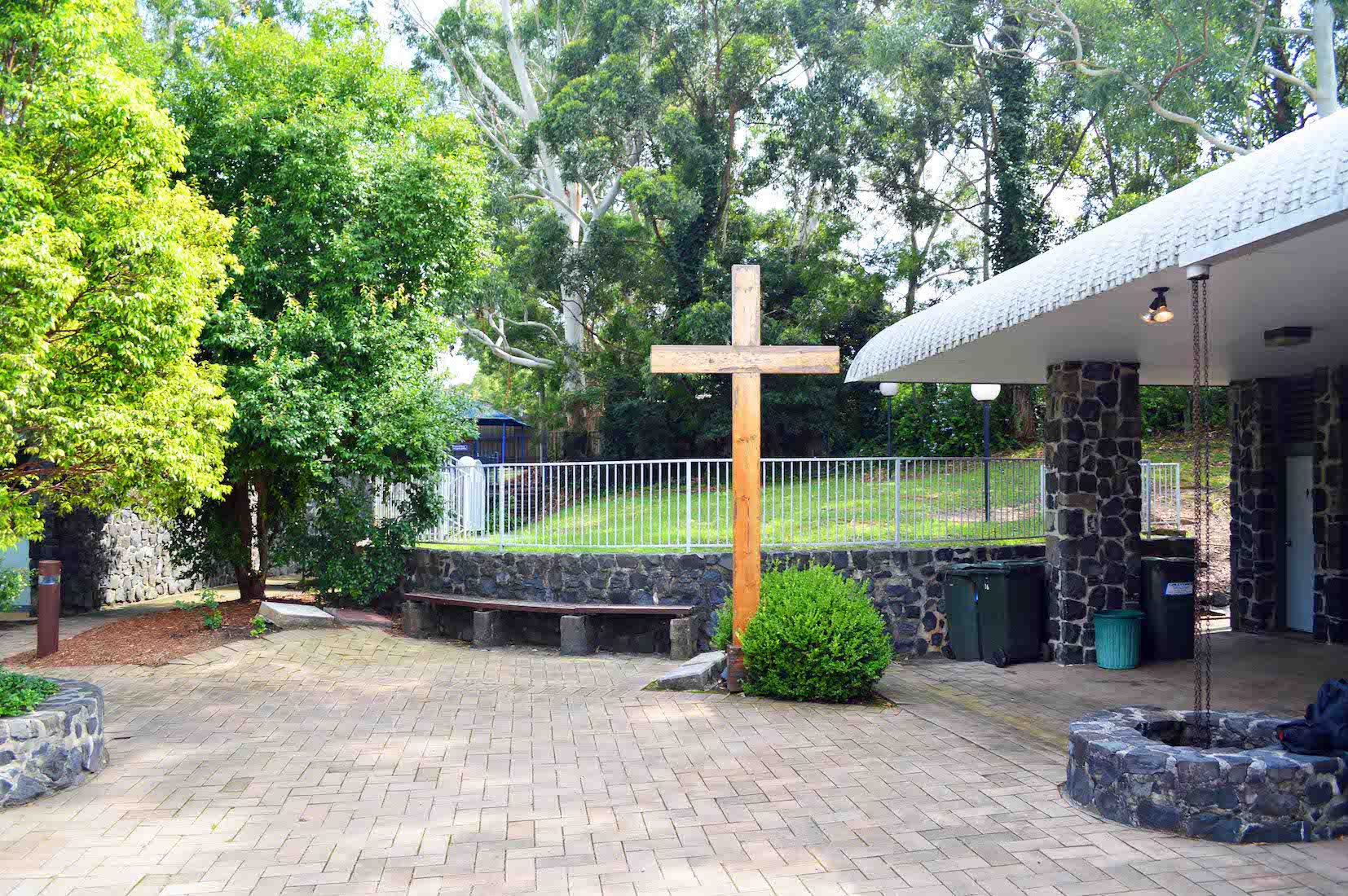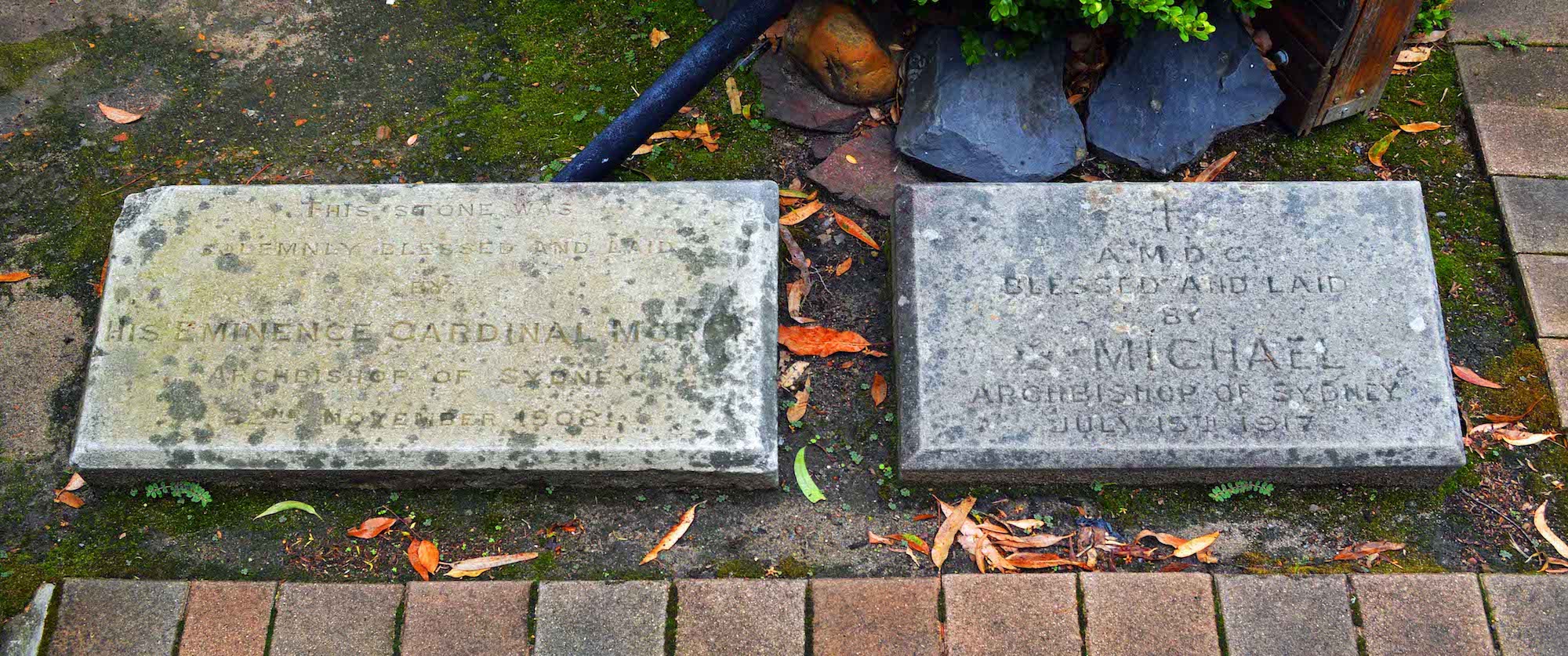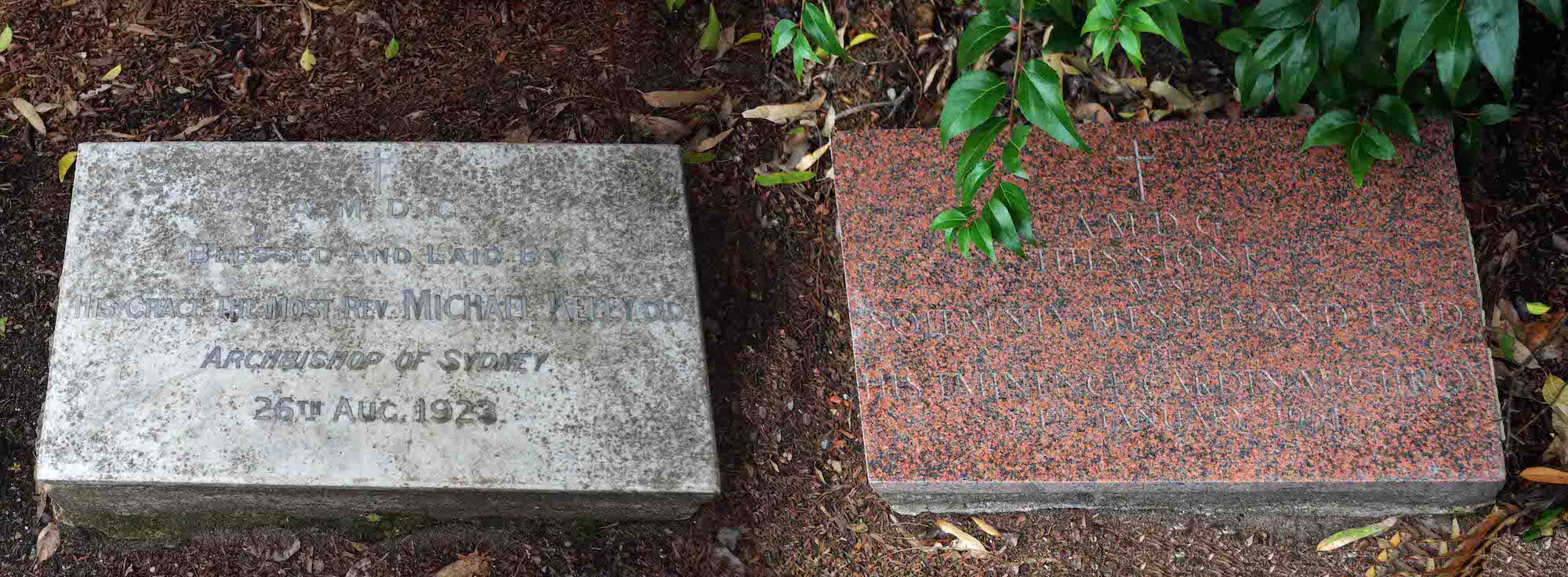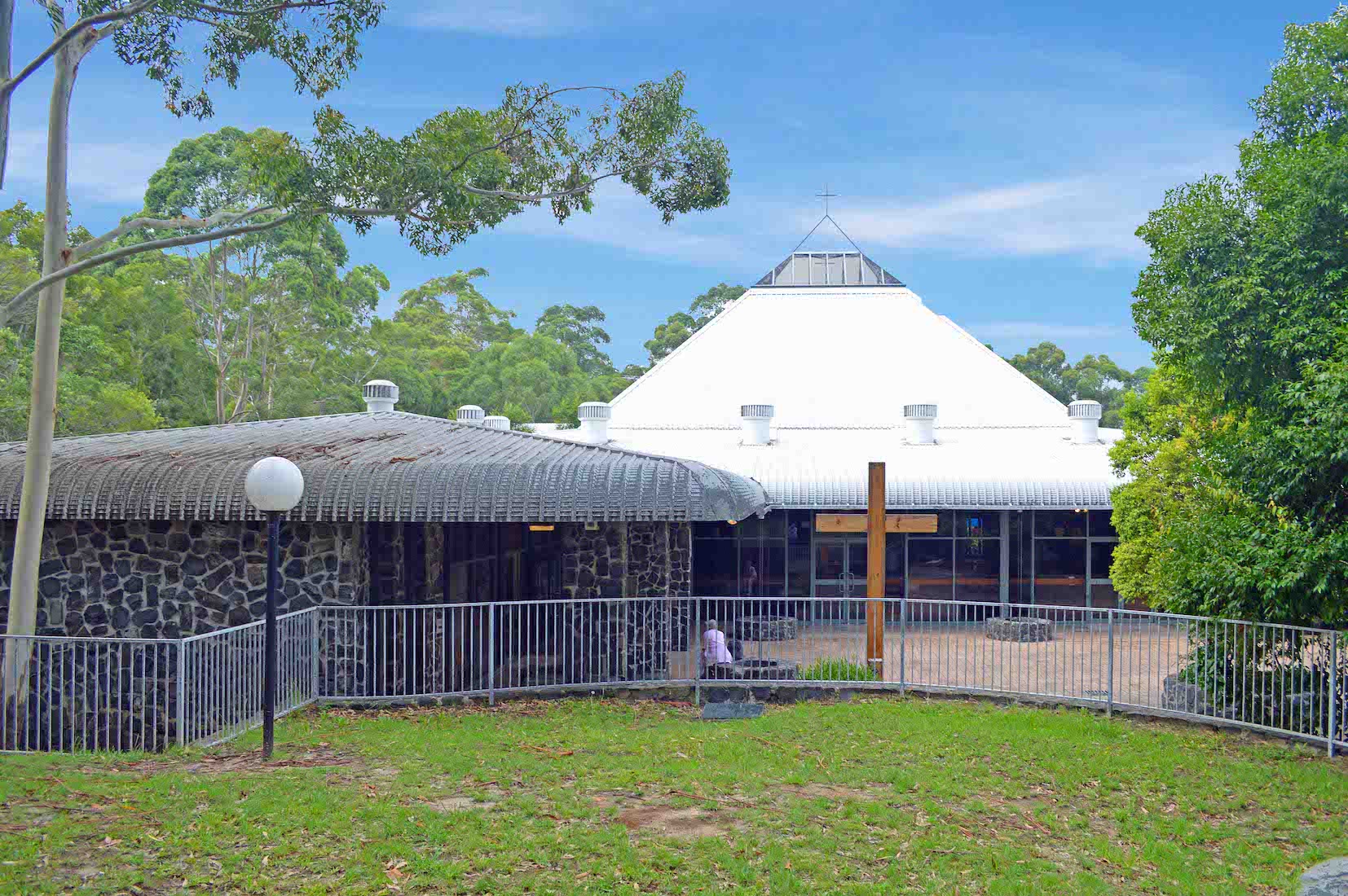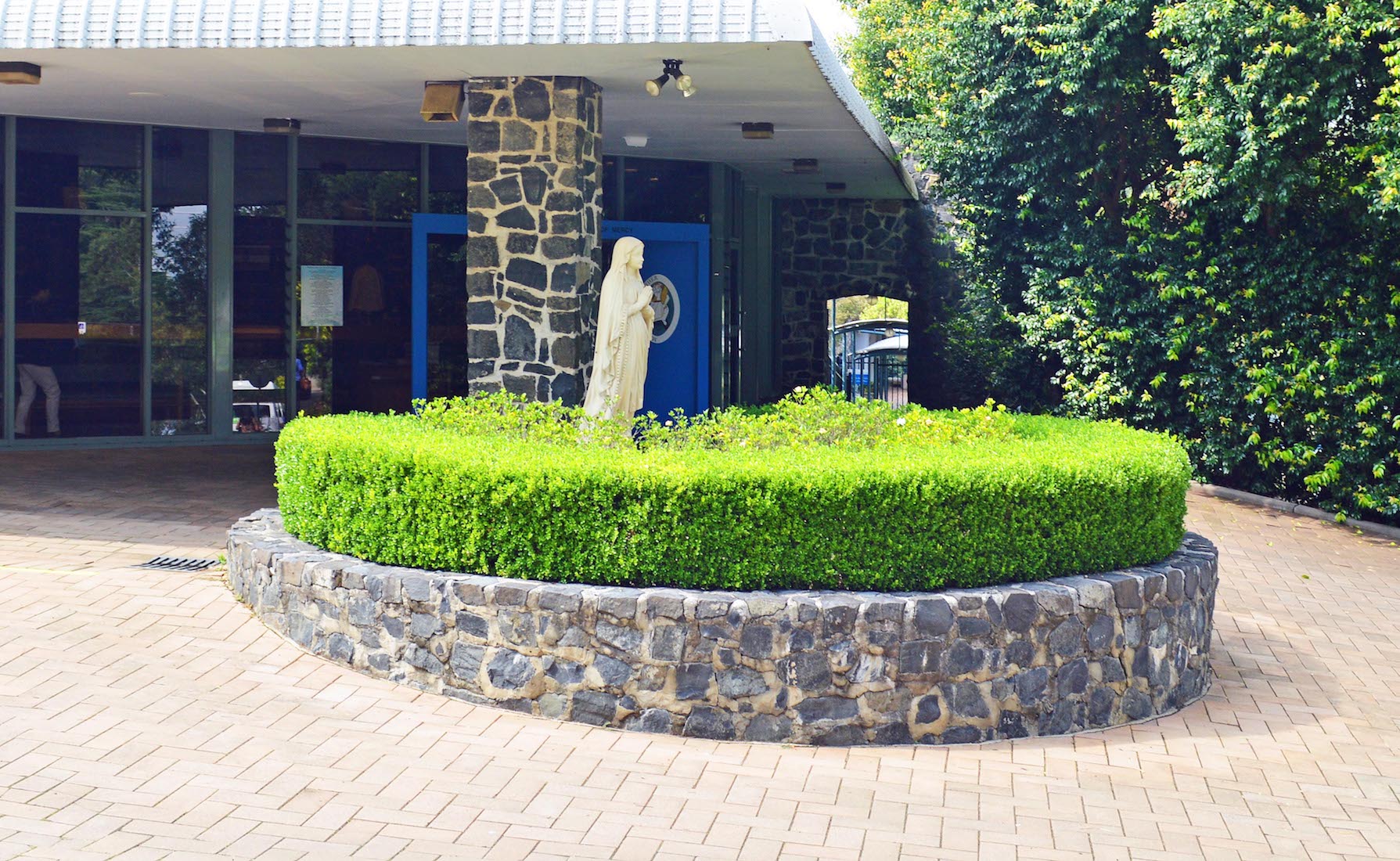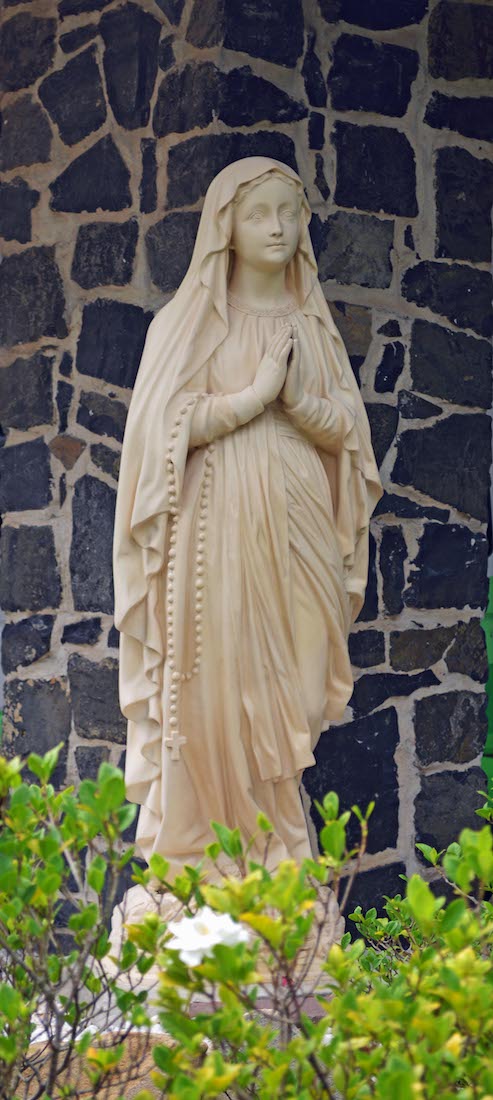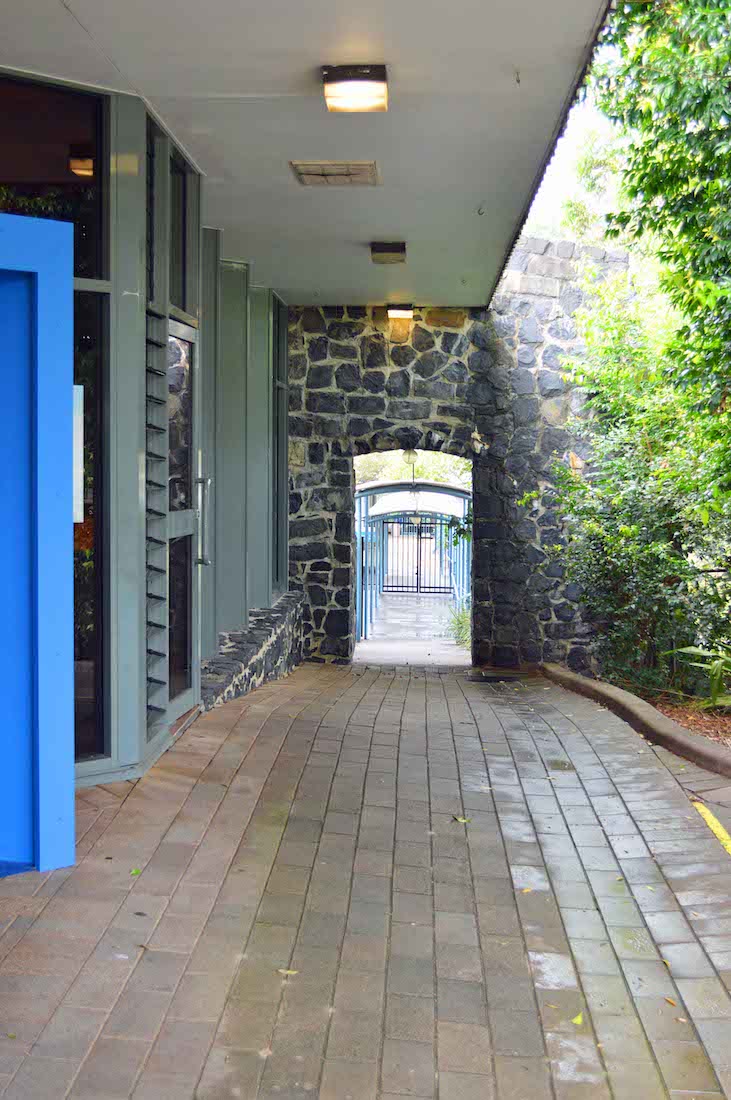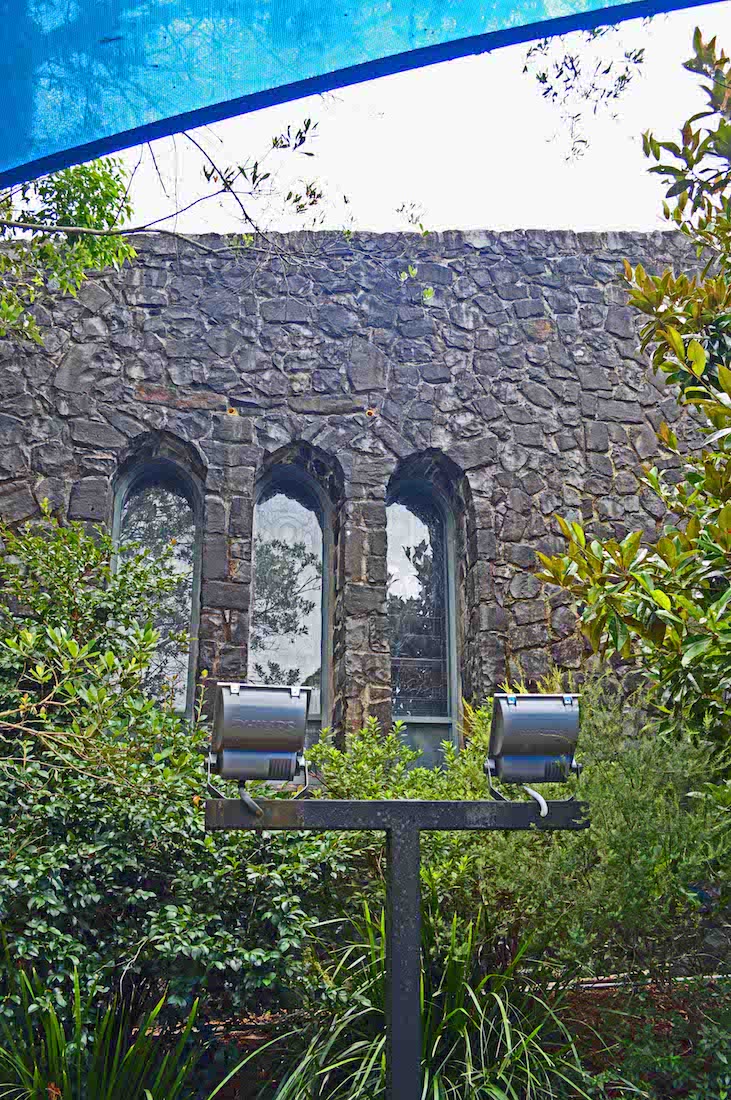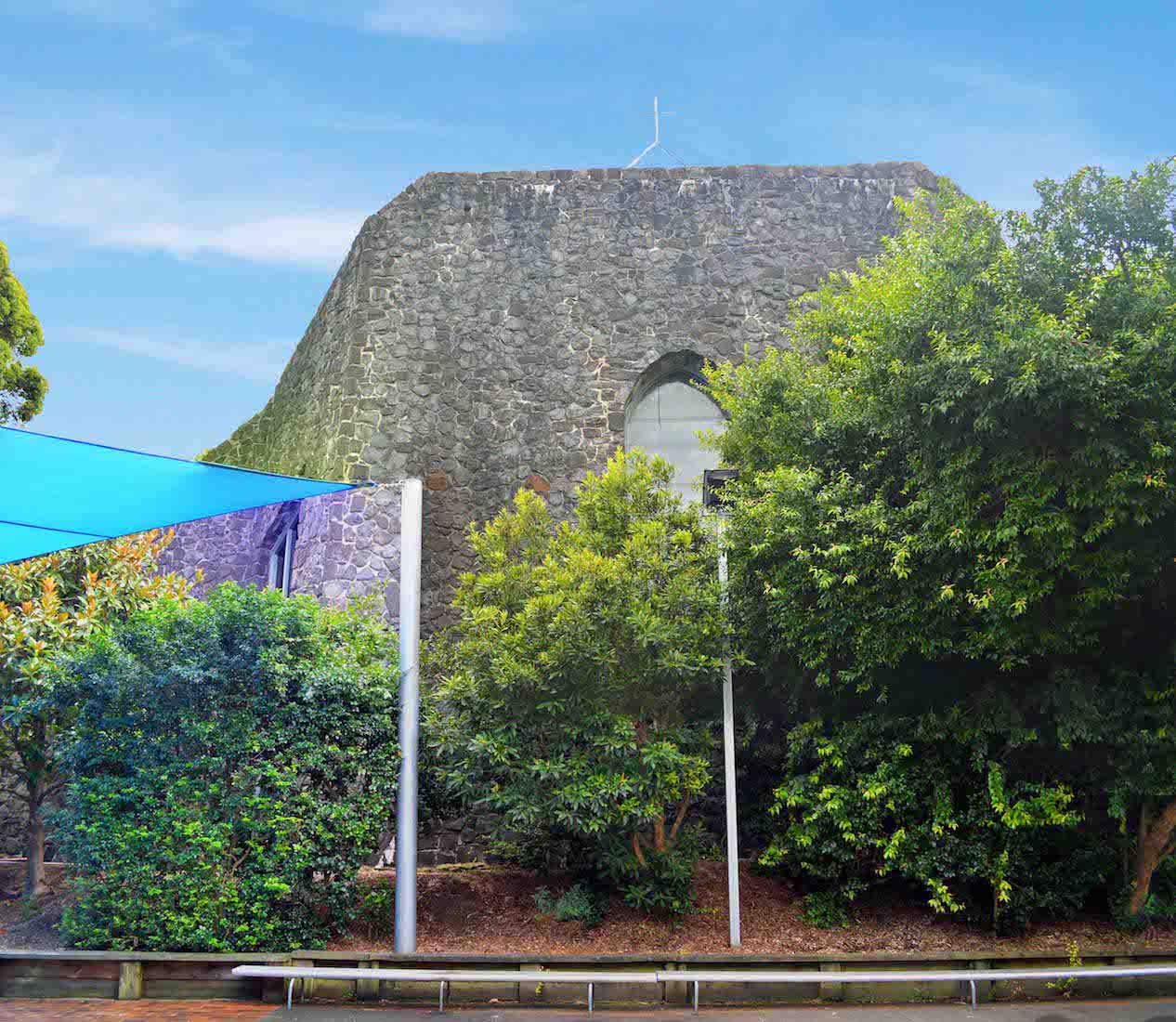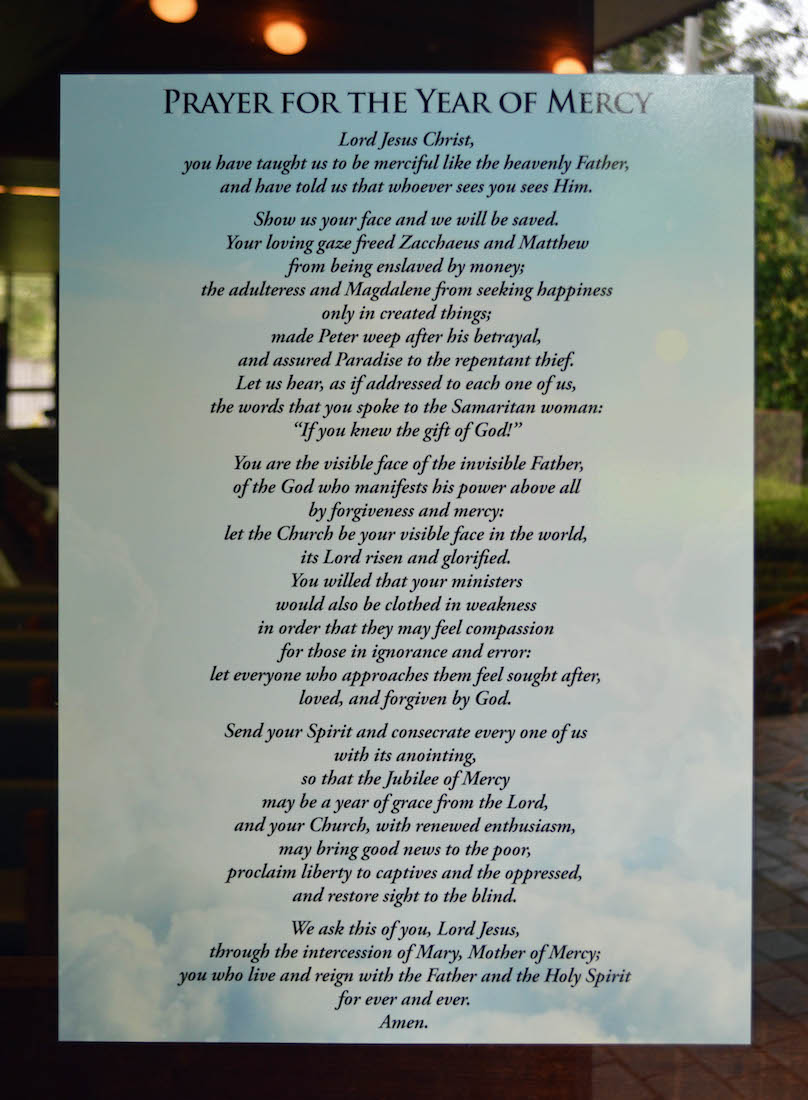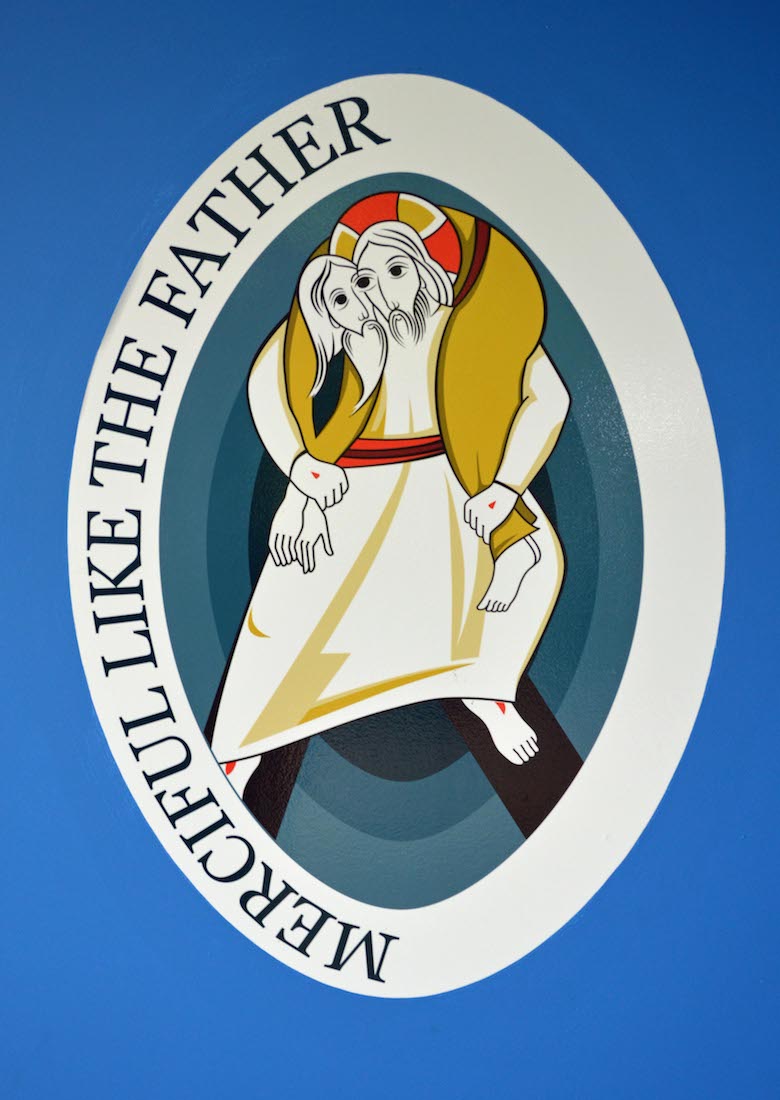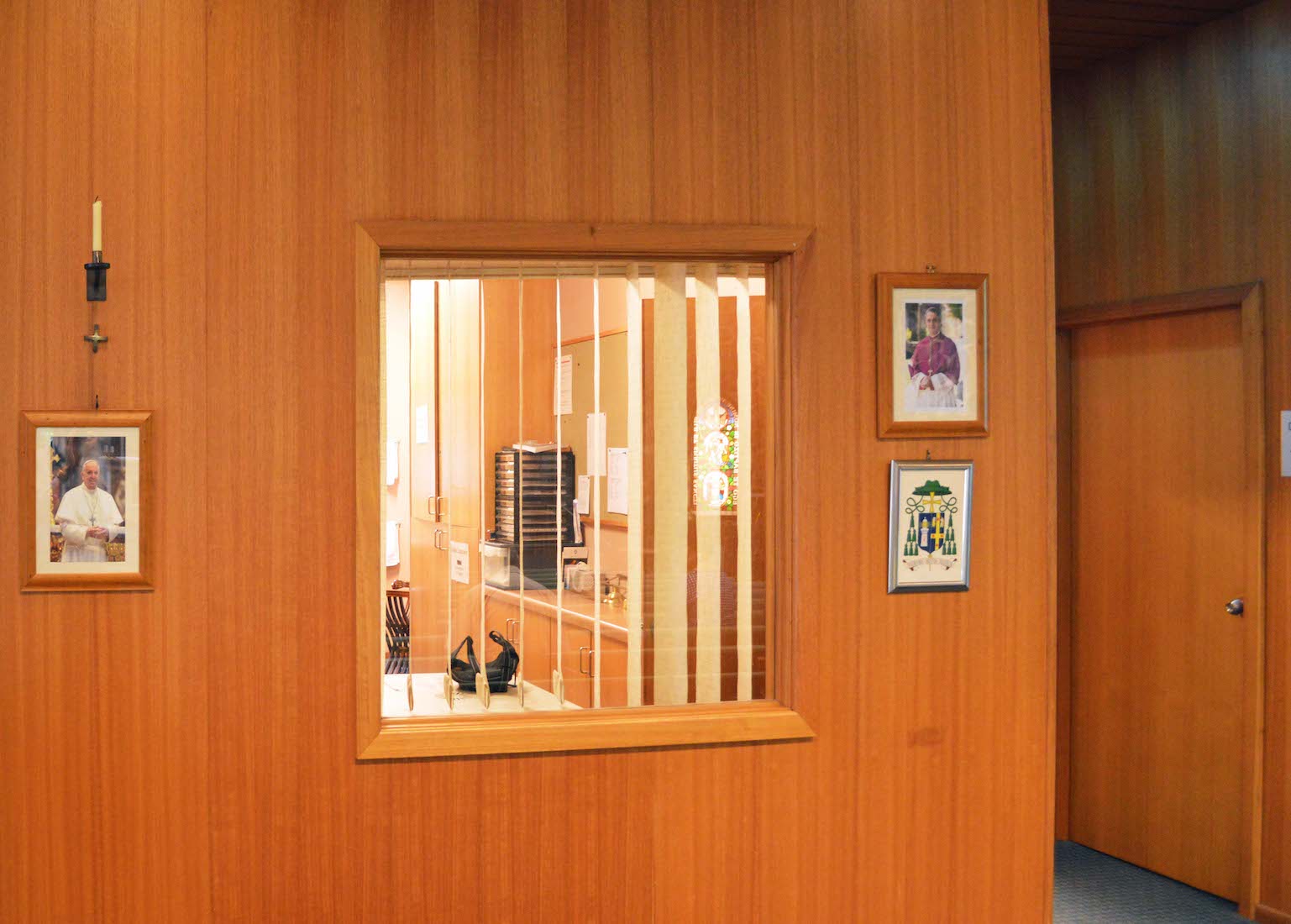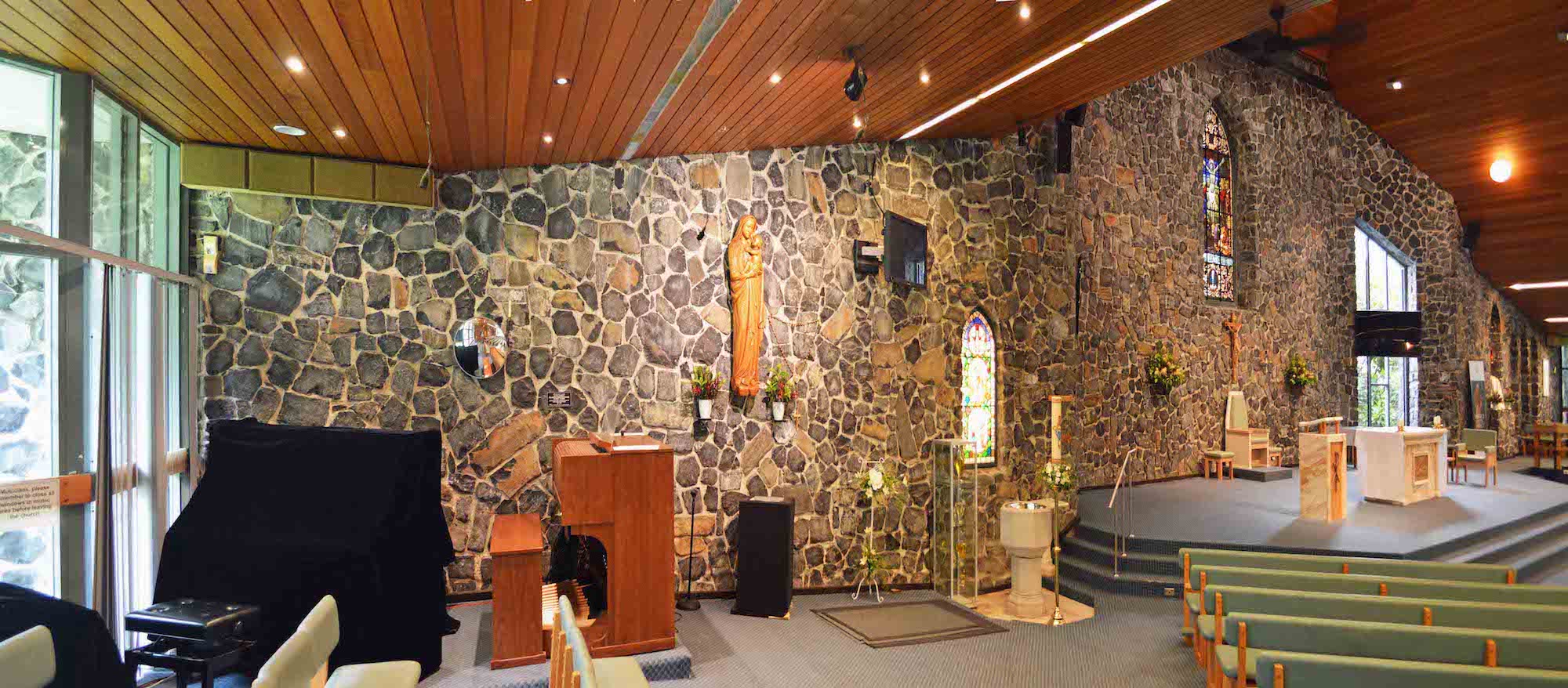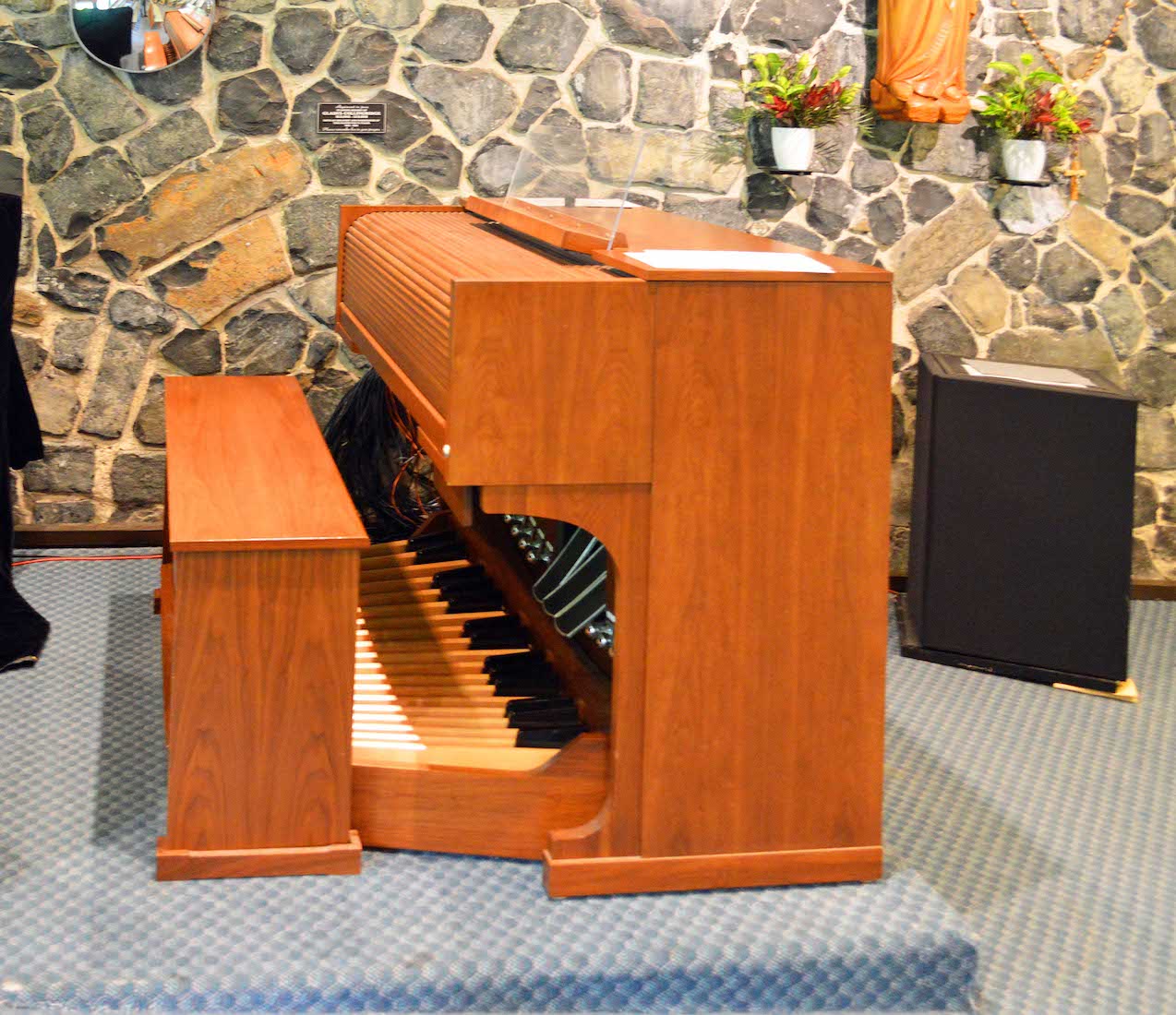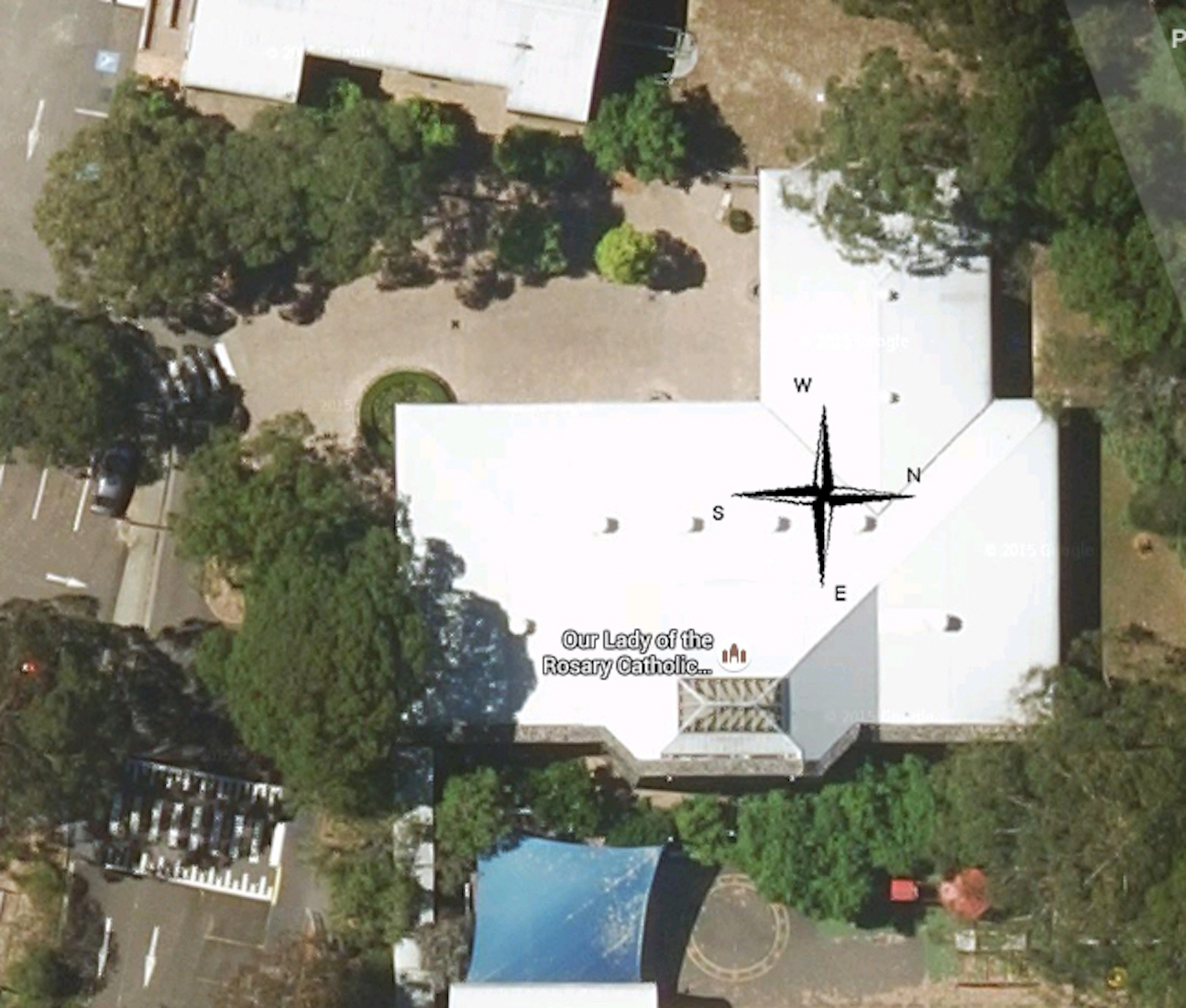
The Cathedral of Our Lady of the Rosary lies at the end of Yardley Road, south of Waitara Railway Station. Within the building, the sanctuary and altar are due south, so we have superimposed the liturgical directions which we shall use, with the sanctuary at the East (capital letter). Yardley Road is out of view at left, and the entrance courtyard is at top left of the building. INDEX
2. FRONT COURTYARD

The Cathedral is approached by way of a large paved courtyard. The main auditorium is at right, while a meeting hall and conveniences are straight ahead.
3. COURTYARD CROSS
A large memorial cross stands in one corner of the courtyard. There are four memorial stones lying near the base of the cross, but the size of the cross indicates its presence here may be primarily a symbol of faith.
4. MEMORIAL STONES I
There are two memorial stones right at the foot of the cross. These read: ‘This stone was solemnly blessed and laid by His Eminence Cardinal Moran Sydney 22nd November 1908’ (the foundation stone of the Our Lady of The Rosary Church, then by the Pacific Highway); and, ‘A.M.D.G. Blessed and laid by Michael (Kelly) Archbishop of Sydney July 18th 1917’.
5. MEMORIAL STONES II
Close by the Cross are a further two memorial stones reading: ‘A.M.D.G. Blessed and laid by His Grace the Most Rev. Michael Kelly Archbishop of Sydney 26th August 1923’, and ‘A.D.M.G. This stone was solemnly blessed and laid by His Eminence Cardinal Gilroy 21st January 1951’ (opening of the Good Samaritan Convent, Narrabeen).
6. VIEW FROM WEST
In 1991 the Church of Our Lady of the Rosary was relocated in its present position, and this modern building erected. The Diocese of Broken Bay was established in 1986, and comprises some 26 parishes in the area. In 2009 the Hornsby district Cathedral Parish was created in place of the two smaller Waitara and Normanhurst parishes.
7. MADONNA GARDEN
This small garden area is located to one side of the courtyard area, and close to the main blue entry doors. Within the planting is a statue of Our Lady of the Rosary. The statue has a rosary clearly visible on the (figure’s) right side.
8. LADY OF THE ROSARY
Our Lady of the Rosary, also known as Our Lady of the Most Holy Rosary, is a title of the Blessed Virgin Mary. The Feast of Our Lady of the Rosary is on October 7, the anniversary of the decisive victory of the combined Christian fleet in 1571 at the Battle of Lepanto, defeating an Ottoman fleet off western Greece. It was formerly sometimes known as the Feast of Our Lady of Victory.
9. SOUTH ACCESS PATH
A walkway leads down past the statue of Mary, bounding the South wall of the Cathedral. It passes through an archway in a solid basalt wall, and leads to the Catholic school beyond.
10. EAST WALL I
From the school property we can look back up to the basalt wall which forms the long East wall of the Cathedral. We shall see later that the central window of these three depicts Mary holding the infant Jesus.
11. EAST WALL II
A little further around, we stand opposite the sanctuary wall, prominently featuring the Crucifixion window.
13. PRAYER
The prayer is entitled ‘Prayer for the Year of Mercy’ and comes as part of The Extraordinary Jubilee of Mercy. This is a Roman Catholic period of prayer being held from the Feast of the Immaculate Conception (December 8), 2015 to the Feast of Christ the King (November 20), 2016. It is seen by the Church as a period for remission of sins and universal pardon focusing particularly on God's forgiveness and mercy. The 2016 Jubilee was first announced by Pope Francis on March 13, 2015.
14. LOGO
The official logo for the Jubilee, designed by Father Marko I. Rupnik, shows Jesus, personification of Mercy, carrying on his shoulders a ‘lost man’, emphasizing how deep the Saviour touches humanity; his eyes are merged with those of the carried man. The background is filled by three concentric ovals, with lighter colors outwards, meaning that Jesus is carrying the man out of the darkness of sin. On one side the image is also joined by the official motto: Merciful Like the Father, (see Luke 6:36), which stands as an invitation to follow the example of the Father by loving and forgiving without limits.
15. CATHEDRAL INTERIOR
We now enter the Cathedral. The auditorium is very wide, with the congregational seating all set in close proximity to the central altar. The seating and ceiling are modern, and the whole East wall is constructed of dark stone which gives a feeling of age and permanence.
16. NORTH WEST CORNER
We begin our investigation of this Cathedral in the North West corner – the back! Here we find a photograph of Pope Francis at left, and two more local photographs hanging at right.
17. BISHOP PETER
On 20 November 2014, Australia received the announcement from the Holy See that the Most Rev Dr Peter A Comensoli DD, STL, MLitt, PhD, until then Auxiliary Bishop for the Archdiocese of Sydney, had been appointed the third Bishop of the Diocese of Broken Bay. His Coat of Arms is displayed below. This combines the Arms of the Diocese of Broken Bay (left) with the personal arms of the Bishop (right) which were assumed on his ordination as a bishop as Auxiliary of the Archdiocese of Sydney in 2011.
18. MERCY POSTER
Nearby is a poster, also relating to the Jubilee of Mercy. The standing figure shows forgiveness and mercy to the repentant figure kneeling before him.
19. WEST WALL NORTH
The main feature of the Cathedral is the large basalt stone wall with the stained glass window set in it. The symbolism of the stone wall is that the stones represent the members of the parish as living stones fitting together neatly but in an irregular pattern, just as the parish members come from diverse backgrounds. Members are all different but fit together as a cohesive community.
20. ORGAN
Music and hymns are part of cathedral worship, and every cathedral needs an organ!


